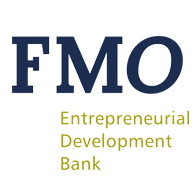



Myanmar is a fascinating country, going through rapid transformation from many perspectives. Recently, I went on a field trip to visit FMO clients in the country’s various sectors. What did I find? An increasingly digitally active population. A rapidly growing economy. A leapfrogging mindset.
After decades of isolation, during which Myanmar (formerly known as Burma) was closed to foreign investors, a political transformation is taking place. Since 2011, the military regime is gradually being replaced by a democratic cabinet. The election of former political prisoner Mrs. Aung San Suu Kya (74) as State Counsellor in 2016 was received with great enthusiasm both within and outside the country.
The Rakhine-state situation evidently caused international concerns on the role of the military. This crisis puts apparent pressure on the appetite of foreign investors and has made it important to carefully assess the risks associated with doing business in the country. At the same time, there are significant gaps to be closed in the country from a developmental perspective. Below, I will zoom in on three of them.
On my first day in Myanmar, I visited one of the local branches of Maha Agriculture Microfinance. Maha is a subsidiary of the Myanmar based Awba Group (“Awba”), the country’s largest manufacturer and distributor of agricultural technology with a focus on crop protection, crop nutrition and high-quality seeds. Maha’s Chief Operations Officer Rupesh Sinha and Managing Director Thaung Htike accompanied our team to the 25-family village Ta Min Twin to visit one their clients: the 63-year-old farmer U Thaung.


Mr. Thaung explained to us that he mostly reinvested the money he made from his agricultural practices into purchasing more livestock and more acres of land. As a true entrepreneur, he has grown his productive land holdings from 3 to 17 acres. He, his son and a permanent employee now cultivate 14 acres, since Mr. Thaung donated 3 acres to his son when he got married. Mr. Thaung has been a Maha-client for two years and has used the loans to purchase fertilizers as well as a walking tractor.
Myanmar’s farmers are largely underserved by formal financial institutions. With 23 percent of the country’s labour force in the agriculture industry (7.9 million people), it is essential for these communities to have access to credible and responsible lenders, like Maha. Most of Myanmar’s farmers (95%) are smallholders, like Mr. Thaung. A large part of this group is quite traditional in its practices; they use oxen and water buffaloes to cultivate their land. Most of them (6.8 million smallholder farmers) need basic training in, for example, the use of fertilizers, irrigation and other best agricultural practices. They don’t have crop insurance, use inferior seeds, and rely on poor-quality fertilizer. In 2018, the agricultural sector represented 26% of Myanmar’s GDP, yet only accounted for 0.3% of Myanmar’s economic growth (which totalled 6.5%).
These data [i] prove there’s a huge untapped potential in this vital part of Myanmar’s economy. Myanmar farmers need training, support and access to finance to scale up and grow their businesses in a sustainable manner. That is why FMO provides finance and Capacity Development support to companies like Maha, that provide smallholders with the much-needed capital and simultaneously help them to manage and scale their business.
The challenge of access to appropriate forms of finance is not limited to the sizeable farmer population: only around 20% of the population has borrowed money from a financial institution. Fortunately, all of this is changing rapidly.From 2013 to 2018, adults using formal financial services rose from 30% to 48% (that is, to 16.5 million people). This service expansion was largely driven by considerable growth within the MFI and cooperative sectors.
However, Myanmar’s women are still severely constrained in access to appropriate finance. As in many emerging markets, female entrepreneurs have reasonable access to microfinance in Myanmar but materially less access to SME financing than men. This, in combination with other (culture related) gender equality issues, causes high income disparities between men and women. 51% of Myanmar women live below the poverty line, whereas “only” 29% of the Myanmar men experience the same level of poverty.
In line with this, and funded by our Capacity Development program, FMO is doing a deep-dive on Gender Smart Microfinance in three Asian countries, starting with Myanmar, with our partners the UN Capital Development Fund and KIT. We visited our MFI clients DAWN and BRAC Myanmar, to discuss how to improve the financial services for female entrepreneurs. We started that discussion with the women entrepreneurs they serve. It became apparent that these organizations (still) experience a mismatch between products (group loans and voluntary savings) and female clients’ reality, financial and non-financial needs and ambitions. FMO and UNCDF delivered a Masterclass on how BRAC and DAWN might better serve their female clients. We determined the next steps in order to support them in this mission.

I think that one of the reasons why Myanmar’s transition is happening at an unprecedented speed, is that the country is benefitting from so-called ‘technological leapfrogging’. So far, the most extraordinary transformation has been led by the nation’s telecom sector. Phone ownership in households more than doubled in 5 years’ time from 42% in 2013 to 87% in 2018. The mobile phone population also shows a great demand for data (70% data vs. 30% voice) compared to other markets (e.g. Nigeria, with 80% voice and 20% data).
However, as I have shown in the previous paragraphs, the same leapfrogging phenomenon has not yet reached Myanmar’s financial services. Can Myanmar leapfrog from financial exclusion to “digital” financial inclusion, just as it did in telecom? How do we ensure that the 74% of people with a mobile phone use that to productive financial services (currently just 8%)[ii]? I most certainly hope we can quickly move the needle and I strongly believe that banks, microfinance institutions and mobile money operators can be positive agents of change if they actively leverage this channel to reach their retail and business customers!
[i] Data mentioned in this blog have been extracted from the publication ’Myanmar 2018, MAP Financial Inclusion Survey Highlights’ - http://www.danafacility.com/wp-content/uploads/2019/08/MAP-FI-Survey-Highlights-2018.pdf
[ii] https://www.mmtimes.com/news/latest-inclusion-roadmap-targets-digital-financial-services.html